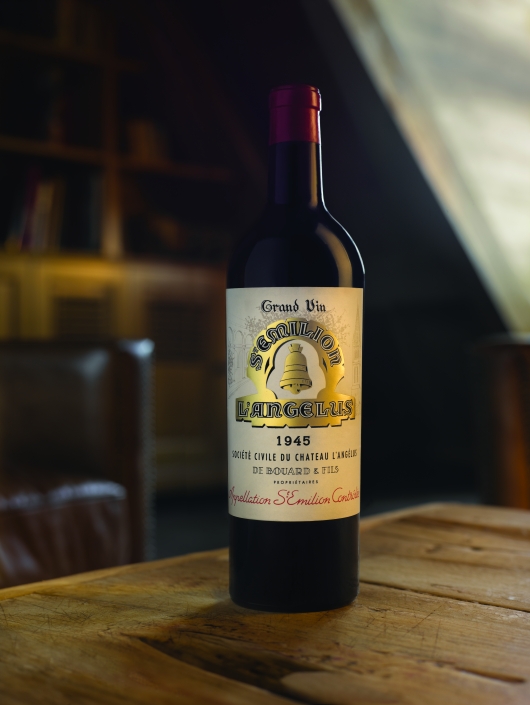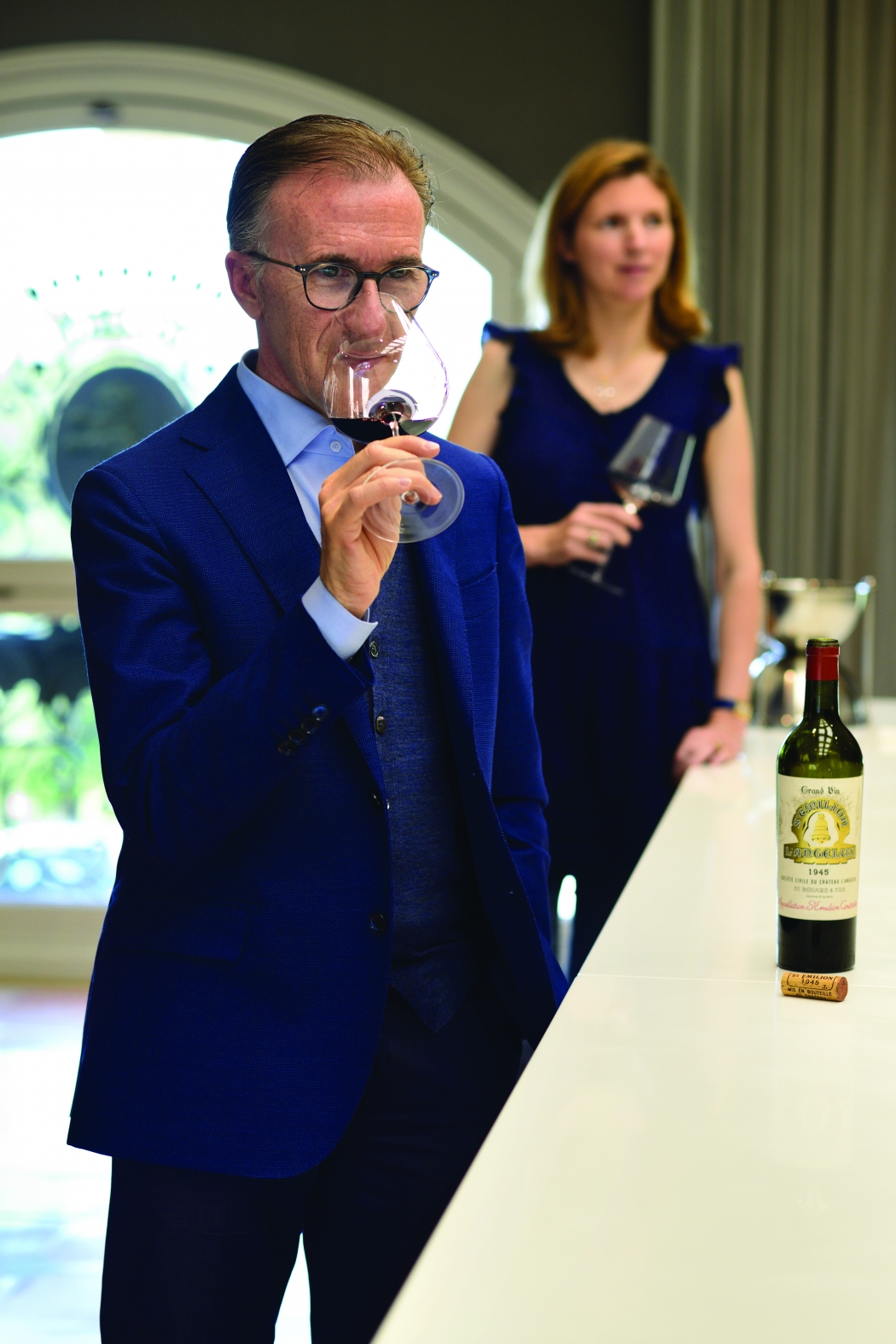
Château Angelus 1945, a taste of history on the palate
Best Sommelier of the World in 2013, after winning the award for Best Sommelier of Europe in 2010, Paolo Basso, born in Italy but Swiss by adoption, travels the world wearing four different hats: wine producer (he produces five wines in Ticino dedicated to his daughter Chiara), négociant for the Swiss market, lecturer at different prestigious schools and wine consultant for Air France, for whom he selects the wines. He stopped off at Château Angelus to taste an outstanding vintage, of which only two bottles, perfectly conserved in the Château’s cellars, remained.
Château Angelus 1945 by Paolo Basso
The colour is quite deep, showing lovely intensity with a garnet-red hue and brick-red glints. On the nose, the wine needs time to reveal its bouquet. It’s important to wait. On opening the bottle, the nose appeared a bit closed, but now the wine is poured, I get slightly smoky notes of tobacco with spicier hints of clove, cinnamon and nutmeg coming through with a balsamic touch. A whiff of pine needles, resin-like notes, then comes to the fore or maybe notes of oak leaves after they have fallen to the ground in autumn.
It’s important to take one’s time. I feel like an archaeologist taking part in a dig, going from discovery to discovery. Tasting an old vintage is like travelling back in time. This wine that has evolved with age remains alive. The pleasure is fleeting, but we will keep that pleasure long in our memories. What we are tasting is not a ‘great wine’, but a great bottle, since each of the bottles is unique.
After a few more minutes, the nose reveals fruity notes of cherry, which we tend to find more often when the wine is young. It’s unusual in such an old vintage. A note of salinity comes through. Simply amazing!
Then, the entry on the palate is very delicate, distinguished and silky. The wine then gradually increases in intensity on the mid palate. You feel the body of the wine is still there, so too its structure. It has wonderful integrity, solidity and classicism. Among other characteristics, freshness comes to the fore, brought by the acidity. This is its backbone. A hint of minerality expresses the life still in the wine; it conveys an energy.
The structure becomes lighter and more delicate in the finish, and the tannins come through, expressing a firmer note and merging with the acidity to create a lingering sensation after the wine has been swallowed. Certain savoury notes then return, such as spices, cinnamon, cloves and even cocoa powder.
Uncorked for an hour, tasted for about half an hour, the wine has now reached its peak, after oxygenation and reaching room temperature in the glass. Patience and respect are required. We must wait for such a wine to give itself up to us. It waited 76 years to be drunk; and it’s our duty to give it a little time, so that we can appreciate it in all its complexity.
In conclusion, this wine is nectar. However, it requires tasting in an ‘intellectual’ way. We should keep in mind that this wine is the fruit of history. It was made thanks to the hard work of men, with the limited means of the times, in an outstanding year for quality but a testing vintage for the vignerons.
Behind the scene
“It was an emotional moment opening this bottle, reconditioned in 2018 and brought up from the cellars shortly before the tasting to enable it to come up to room temperature,” remembers Stéphanie de Boüard-Rivoal. “It brought to mind a Christmas with my father, Hubert, and grandfather, Jacques. Because 1945 was the first vintage that followed my grandfather’s return from captivity in Germany. At that time, the wine was made up of 40% Cabernet Franc.” A great year for wine but very problematic for the vignerons, since the crop size was tiny. Right at the beginning of May, between Hitler’s death and the signing of the armistice, a severe, devastating frost hit the vines, following a lovely spell of weather that helped the growth of very well-constituted, very concentrated grapes. The frost made a natural selection. In all, the 1945 vintage amounted to only a quarter to a third of a normal crop. Which makes this outstanding bottle, tasted with reverence and joy, all the more precious.


